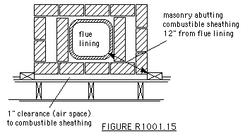Big Dan
New Member
I'm just saying for the do-it-yourselfer which it seems like there's a lot on here its way safer to just put a stainless steel liner down their existing clay flue even if its cracked Than to break out all the flues and possibly causing a bigger problem. Remember no matter what you do it will never be totally "safe". I mean back in the day they made Chimneys out of wood



 I already know that has a direct relation to creosote production. just curious.
I already know that has a direct relation to creosote production. just curious.